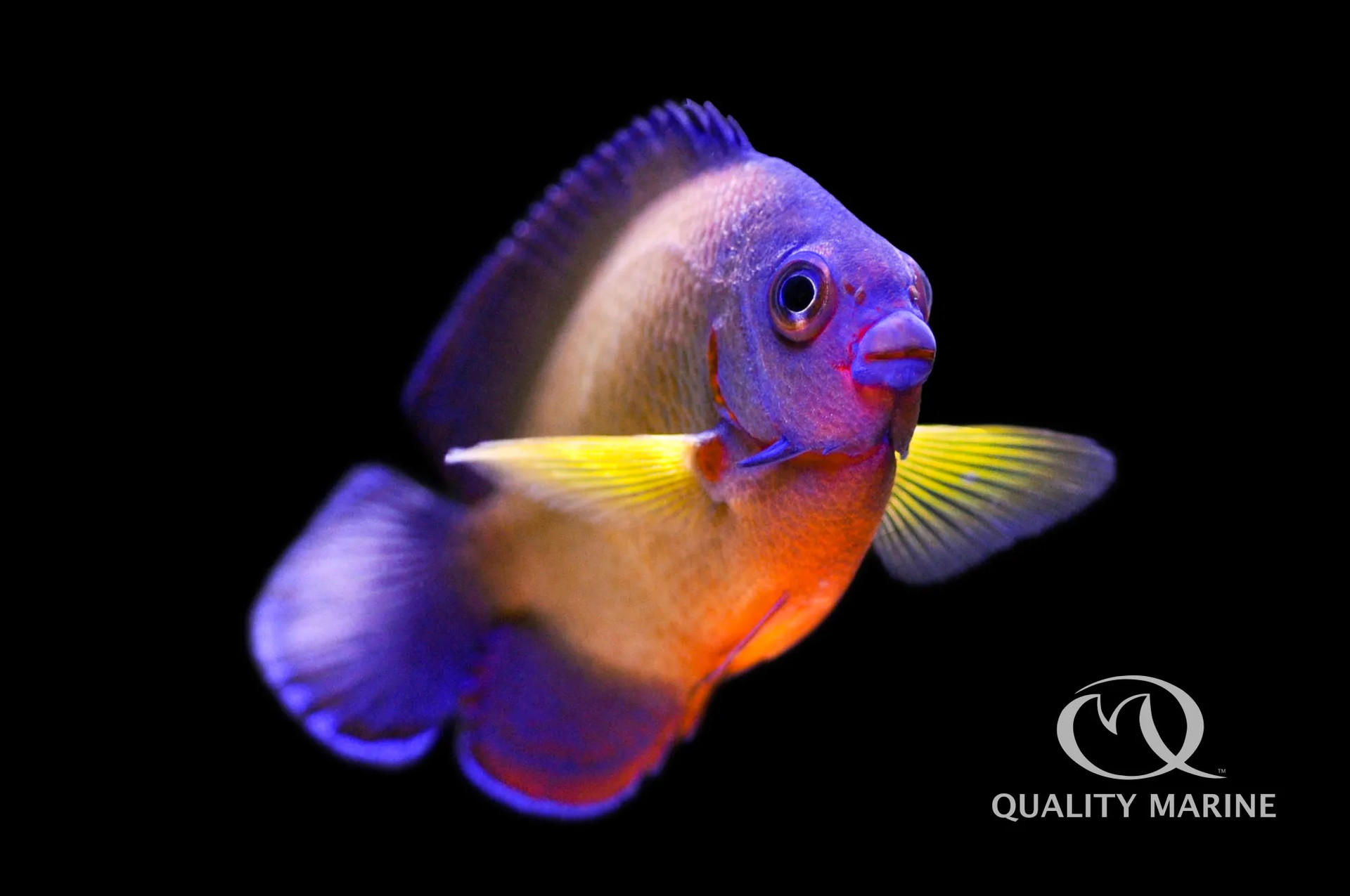Highly Underrated Fish - Coral Beauty

The coral beauty is widely known, even more widely spread and most widely under appreciated for it's excellent coloration and durability in the home aquarium.
In the Wild
Centropyge bispinosus are among the most widespread "dwarf" angels. With the exception of Atlantic waters, these can be found on about any tropical reef around the world. They will be seen at a great variety of depths (10' down to 200') and generally prefer areas with rich coral growth where they form harems of between 3 and 7 individuals. They are a ominvorous grazing fish, consuming algae as well as meaty benthic and suspended foods.
They grow very slowly to a max size of just under 4 inches for dominant males. The vast majority of them show some variation of the standard coloration shown in the photo on the right, but some will be anywhere from nearly all yellow to all dark blue. There are also reports of fairly major color changes in single individuals; fish with seemingly normal coloration developing aberrant traits and vice versa.
In The Aquarium
As a result of their incredibly widespread distribution, the Coral Beauty can be sourced from just about anywhere in the tropical world. This being said, the fish we source from our Quality Marine exclusive short supply chain in Fiji are impeccable fish; peak health, excellent natural food response and gorgeous coloration. While they may cost a little more, they are more than worth the nominal upcharge. Be sure to ask your LFS about SSC Coral Beauties from QM.
While most of us in the US call this fish the "Coral Beauty" it is more commonly called the "Twospined Angelfish" by the world abroad. Regardless of what you call it, it is a brilliant aquarium fish. Coral Beauty Angels acclimate well and generally take a wide variety of foods very quickly, even segueing onto pelletized and flake foods in short order.
These are among the least aggressive of dwarf angelfish, making it a good candidate for hosting harems of fish. For those attempting this, be sure to add all the fish at once, and make sure that there is a distinct size difference between the one largest fish (male) and the rest of the smaller ones (females). As with any densely populated aquarium, multiple feed points can help with preventing some territoriality. Other fish added after the Coral Beauty that are a similar size or shape may be bullied, especially if they are docile in nature.
Over the years, many people have reported having success keeping dwarf angels in reef type aquariums. While this is up to the individual aquarist, attempting this should be done with tempered expectations and great care. I personally have not had good luck with this, even in large (250 gallons+), I do know of people who have had no issues over several year spans. While it is one of the better bets in the Centropyge genus for reef aquariums, it can still be a risk, especially with clams. The larger the aquarium, and the more often the fish is fed, the less likely you are to encounter this issue. In aquariums where it is the "star," without potential food item catastrophes and it can be housed in something as small as 45 gallons.
Biblio:
Gerald R Allen & Roger Steene & Mark Allen, Angelfishes & Butterflyfishes, 1st ed. (Odyssey Publishing 1998)
Scott W. Michael, Angelfishes & Butterflyfishes, 1st ed. (T.F.H. Publications 2004)
Rudie H Kuiter & Helmut Debelius, World Atlas of Marine Fishes, 1st ed. (IKAN-Unterwasserarchiv 2006)
Fishbase, Capuli, Estelita Emily & Valdestamon, Roxanne Rei. (2014). www.fishbase.org/centropyge-bispinosus. Accessed 18 October 2020